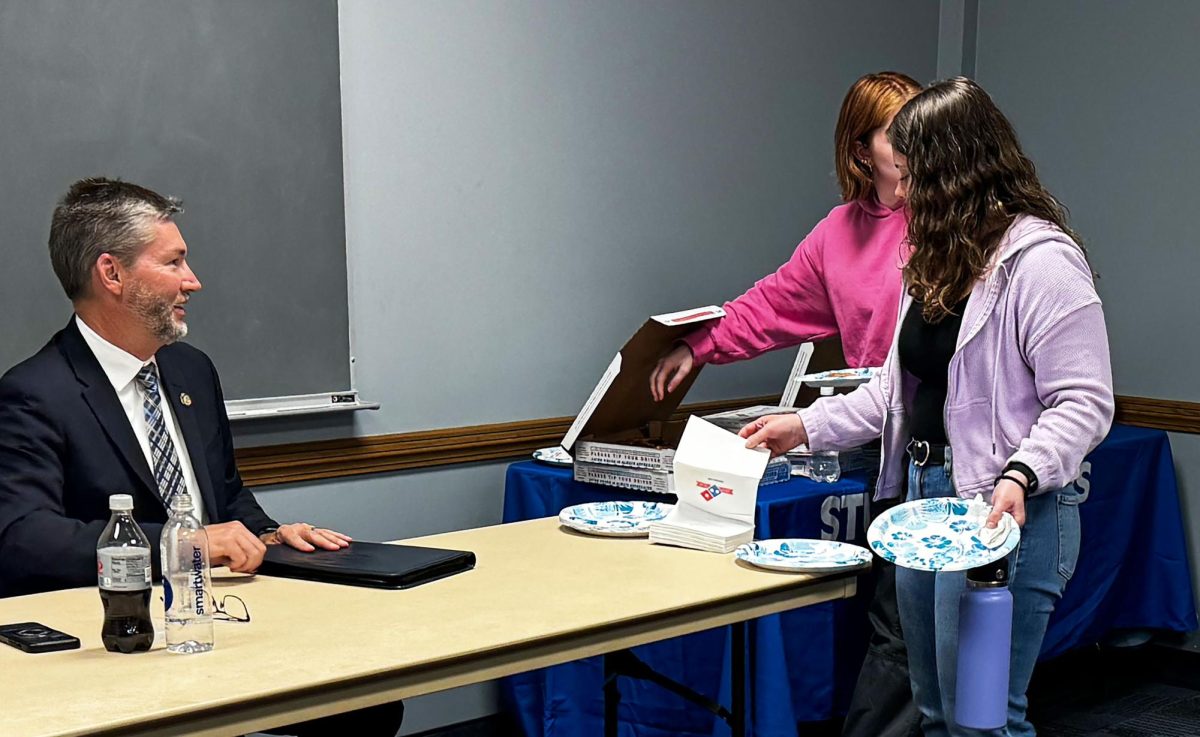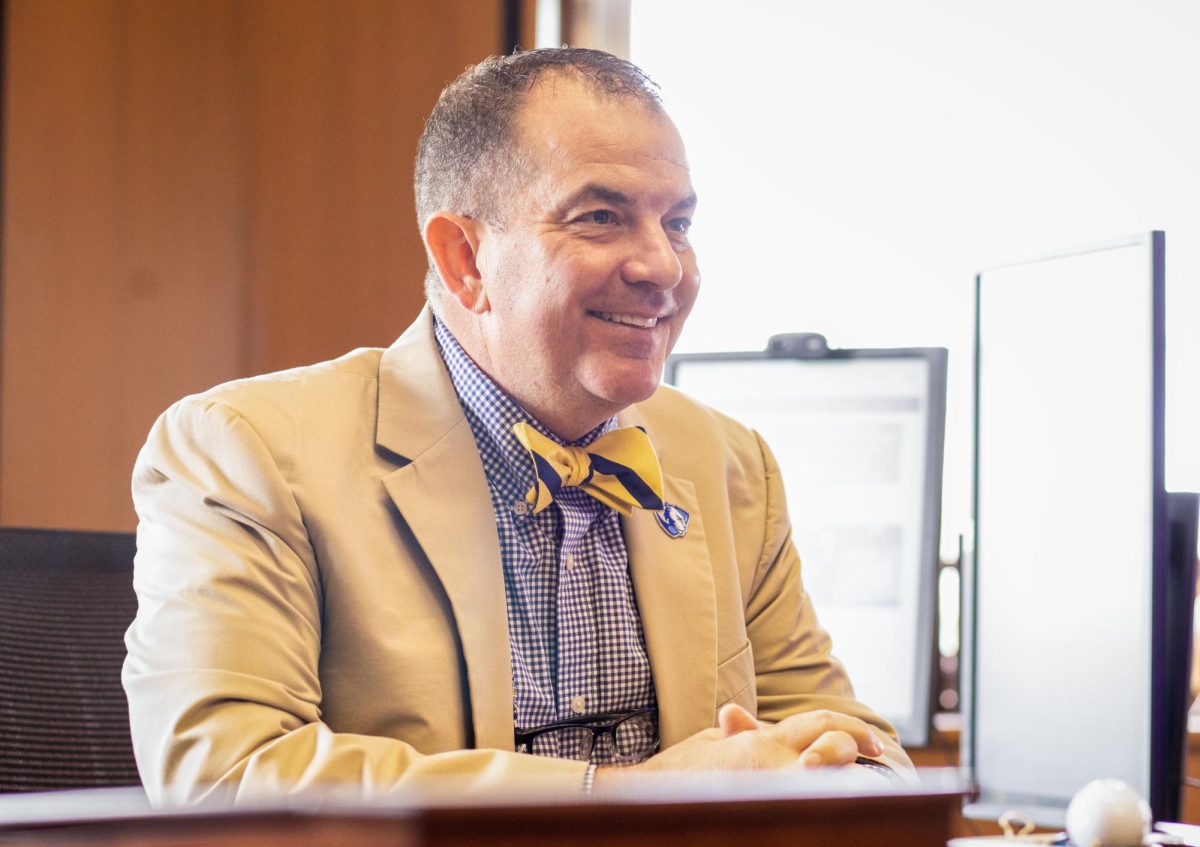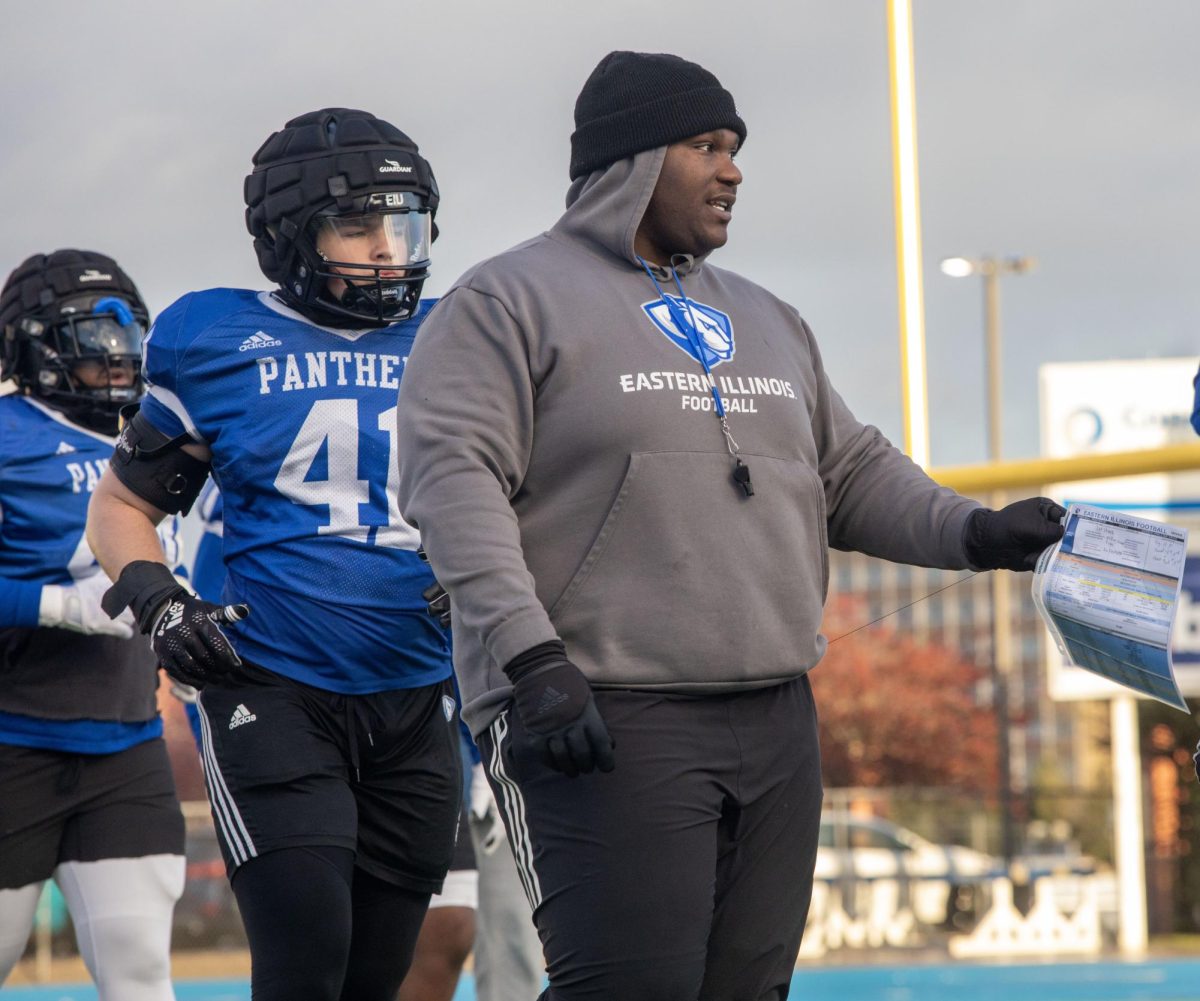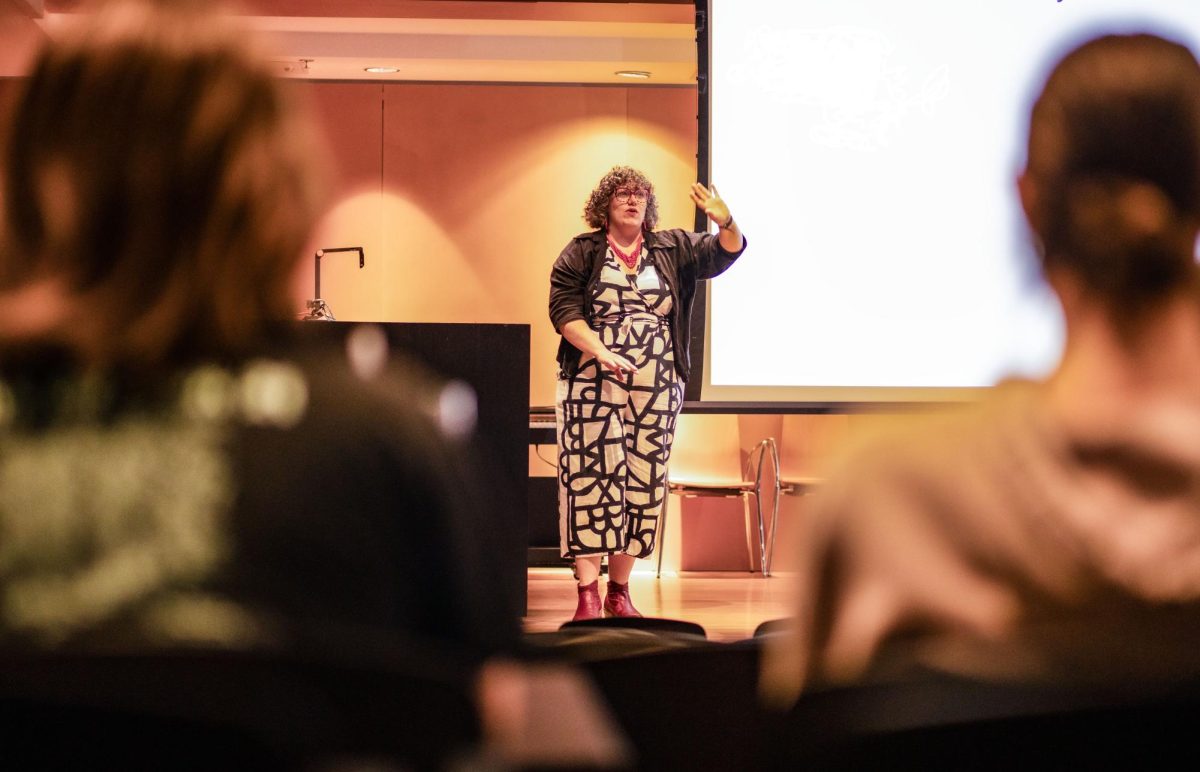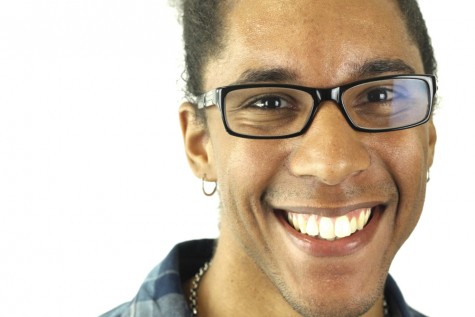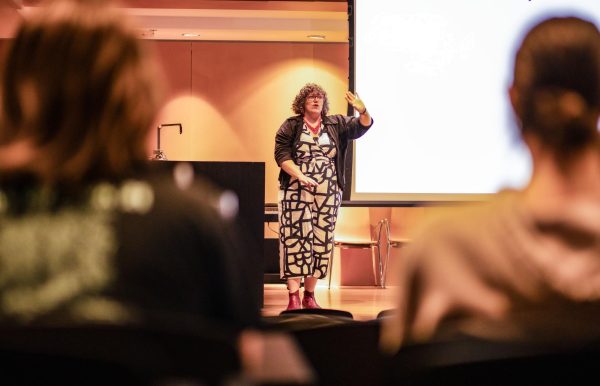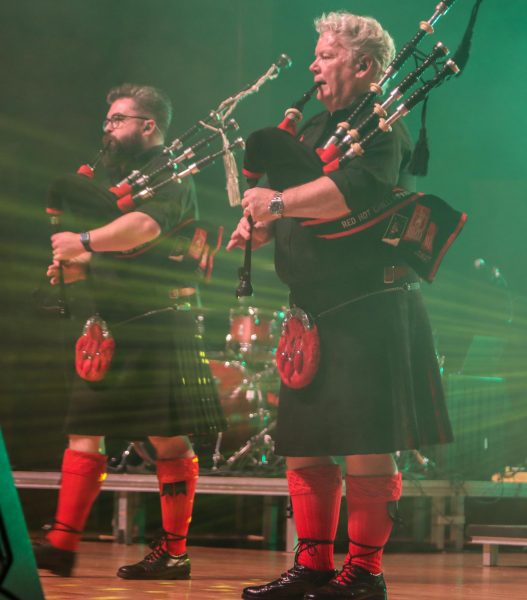Transgender student reflects on struggles, goals
October 9, 2014
Editor’s note: Because of the sensitivity of this article, the person interviewed wished to remain anonymous; therefore, this article will have a change in pronouns from “she” to “he.” In observance of Lesbian, Gay, Bisexual, Trans, Queer and Ally History Month, this is the second installment of articles profiling people on Eastern’s campus who identify as one of those letters.
Standing in the mirror, she did not feel like a woman. She was having thoughts of second-guessing her own gender identity, and it bothered her tremendously.
Gender identity refers to how someone identifies. Gender identity is not the same as sexual orientation, which refers to whom a person is sexually attracted to.
Many times she would brush off second-guessing her gender, even suggesting to herself that she was a lesbian.
She could not understand why she was feeling this way.
“‘Am I female? I don’t feel like a woman.’ I just kept with the back and forth,” she said.
She would talk to her friends about her feelings, and they too said she was overthinking the ordeal and reassured her that she was female.
She even tried dating men hoping the thoughts would vanish; however, the thoughts never subsided and she continued to question her identity.
“I gave it a chance; I wasn’t sure,” she said. “(But) it never felt right. I did it for my family.”
It was not until she came to Eastern that she revealed the “truth” to herself—she identified as a he and would forever work on cutting ties with his feminine identity becoming a transgender male.
Someone who is transgender identifies in a way that differs from the sex they were assigned at birth.
Sex and gender are two different terms; sex refers to the sexual organs people are biologically born with, while gender refers to what a person identifies as.
“I don’t want to be a female. I want to be a guy… I just don’t feel like I belong in the body I am in,” he said.
Though he finally admitted to himself who he was, he said the anxiety was still prevalent because he had bigger issues to deal with—his family and how society would treat him.
“Oh God, what am I going to do now? I didn’t know what to expect,” he said.
During that time, he was only out to himself and some people on his floor who were not very comfortable with the idea.
He said he lived in an all-female residence hall where he had to hide his true identity and was still addressed by his feminine birth name.
“It really drove me nuts,” he said. “I was scared still.”
He said he would get up earlier than everyone else to shower and bring his clothes with him to avoid the hassle of walking out with a towel.
“People didn’t really ask much, but I did get stares a couple of times,” he said. “While everyone else is brushing their hair or they’re painting their nails—I’m brushing my teeth, wearing cologne and leaving.”
What made things worse was his roommate was anti-gay and close-minded.
Many students on his floor would also stare at him awkwardly, which made him uncomfortable.
When his roommate found out about his identity, their conversations ended.
Things were so uncomfortable for him; he would wait until late at night when his roommate was asleep before heading to bed to avoid the awkwardness.
“I would say, ‘Hi, good morning’ and she would brush it off,” he said.
This was all before he switched floors because he was tired of how his roommate was acting. After the move, he felt more accepted by the residents living on his new floor.
He said everyone’s reaction to his identity was, “That’s fine, we won’t treat you any different.”
However, revealing his identity to people at school was only part of the battle. He still had his family to deal with.
While still in high school, he told his mother he was gay, which led to a period of rejection and isolation.
“She stopped talking to me for six months—six months is a lot; that’s half a year,” he said. “She would serve me my food at the table and leave.”
Because of his mother’s reaction, he would lock himself in his room and stay longer at school after hours.
“I didn’t want to feel the loneliness of my home,” he said.
He said his older sister found out about his identity first by asking questions and piecing together the clothing he wore, which was associated to more masculine or rocker type of clothes.
The cold war between he and his mother ended one day when she came to him crying and apologizing for her behavior. His mother told him that it was hard for her to understand who he was and she was afraid for his safety.
“‘There’s a lot of discrimination against LGBT people and that is my fear—that I’m going to find you dead,’” his mother admitted to him.
Since then, their bond has grown stronger and she now jokes with him about his identity; however, his mother does not know that he is transgender.
For now, he has opted out of telling her the full truth about being transgender for fear of losing her and receiving the same treatment in the past.
His mother now assumes that he is gay instead, but he suspects his mother is catching on.
He said society has issues with transgender people because they do not understand them.
“It bothers (you) because I don’t have what’s down there that you think I should have? I’m not bothering anyone,” he said.
He said with lesbian, gay and bisexual rights coming more to the forefront; many people are forgetting the T in the acronym.
“What about our marriage—what about our rights?” he said.
With only a small amount of people knowing his actual gender identity and his immediate family having some idea, he is somewhat at ease; however, he is facing another issue with what he wants to do with his professional life.
He has always had an interest in the military and wants to join the United States Army, but because he is transgender this is not allowed.
As of 2014, an estimated 15,450-transgender people are currently serving in the U.S. Army while keeping their identity hidden, according to a report by Palm Center, a group that has researched sexual minorities in the military for the past decade.
The “Don’t ask, don’t tell” policy was repealed in 2011, allowing lesbian, gay and bisexual people to enlist and serve in the military.
However, a ban still exists for transgender people, and if they happen to be “outed” they are discharged from the Army regardless of their military status or rank.
However, allowing transgender individuals within the Army has been up for discussion lately.
He said he has always had a fascination with the military and admired what they have done for the country.
Therefore, in order to join the military, he said he hopes to fully transition from a biological female to a male—an operation that can cost $30,000 or more in some states.
Transitioning is a lengthy process in which a male or female can undergo surgical procedures to physically change into what they identify as, which is called sex reassignment surgery.
However, such a transition is not always covered by health or medical insurance; prices range state to state and the person opting to get the procedure must be medically diagnosed with gender dysphoria.
Gender dysphoria is when a person feels uncomfortable because of the gender assigned to them at birth, but not every transgender person will experience this.
“I want to be a soldier; I want to serve this country,” he said. “It’s a sacrifice I’m taking.”
Roberto Hodge can be reached at 581-2812 or [email protected].




